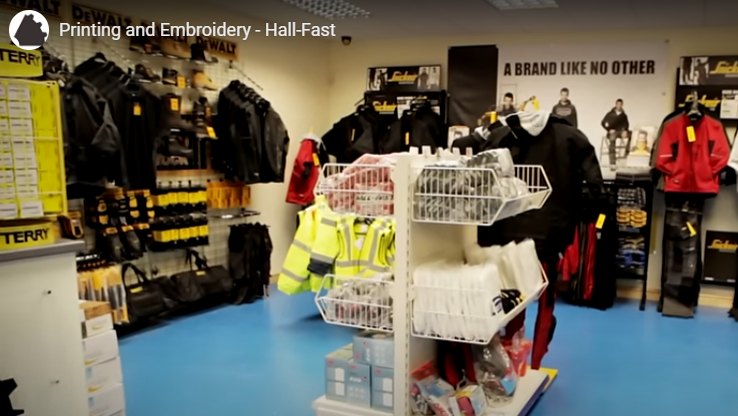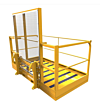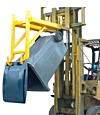
In today's workplace environment, proper workwear isn't just about meeting regulations—it's about ensuring safety, enhancing productivity, and projecting professionalism. Whether you work in construction, healthcare, hospitality, or any other industry requiring specialized attire, selecting the right work clothes can make a significant difference in your daily comfort and overall job performance.
This comprehensive guide explores the essential considerations for choosing protective clothing across various sectors, helping you navigate the diverse world of safety workwear available in the UK market.
Understanding Workwear Fundamentals
Before diving into industry-specific recommendations, it's important to understand the core principles that apply to all quality workwear:
Safety First: The Primary Purpose
The fundamental function of any workwear or protective clothing is to mitigate workplace risks. Quality work clothes should:
- Provide appropriate protection against industry-specific hazards
- Comply with relevant safety standards and regulations
- Maintain protective properties throughout normal wear and laundering
- Include proper certification and labelling indicating protection levels
- Offer visibility features when working in low-light conditions
Safety should never be compromised for comfort, style, or cost—though modern workwear increasingly manages to deliver all these factors without compromise.
Comfort and Functionality
Even the most protective garment fails if workers find it too uncomfortable to wear properly. Effective work clothes balance protection with:
- Freedom of movement for job-specific tasks
- Breathability to prevent overheating
- Appropriate weight for seasonal conditions
- Ergonomic design that accommodates natural body movements
- Adjustable features to accommodate different body types
The relationship between comfort and compliance cannot be overstated; uncomfortable protective clothing is more likely to be worn incorrectly or removed entirely, negating its safety benefits.
Durability and Value
Work uniform durability directly impacts both safety and cost-effectiveness. Quality workwear should:
- Withstand the rigors of daily use in demanding environments
- Maintain structural integrity after repeated laundering
- Feature reinforced stitching at stress points
- Use appropriate materials for specific working conditions
- Provide good value over its entire lifespan, not just at purchase
When evaluating cost, consider price-per-wear rather than just the initial investment. Premium workwear often delivers superior value through extended usable life and better protection.
Industry-Specific Workwear Requirements
Different sectors present unique challenges requiring specialized protective clothing solutions:
Construction and Trades
Construction sites combine multiple hazards, from falling objects to sharp materials, requiring comprehensive protection:
Essential Items:
- High-visibility clothing (jackets, vests) for site visibility
- Durable work trousers with reinforced knees and multiple pockets
- Hard-wearing safety boots with appropriate toe protection
- Weather-appropriate outerwear for year-round site work
- Head protection that meets current safety standards
- Task-specific gloves for different applications
Key Considerations: Construction workwear must balance ruggedness with comfort for long days in physically demanding roles. Look for articulated designs that accommodate bending and stretching while maintaining coverage and protection.
Manufacturing and Industrial Environments
Factory and industrial settings often involve machinery, chemicals, and process-specific risks:
Essential Items:
- Flame-resistant clothing where required
- Chemical-resistant garments for specific environments
- Anti-static workwear for electronic manufacturing
- Cut-resistant sleeves or gloves for sharp material handling
- Enclosed footwear with appropriate sole materials
- Hearing and respiratory protection where indicated
Key Considerations: Industrial workwear often needs to address very specific hazards. Conduct thorough risk assessments to identify precise protection requirements rather than adopting generic solutions.
Healthcare and Medical
Medical environments require workwear that addresses both biological hazards and comfort during long shifts:
Essential Items:
- Antimicrobial scrubs and uniforms
- Fluid-resistant garments for splash protection
- Comfortable, supportive footwear for extended standing
- Disposable protection for high-risk environments
- Temperature-appropriate layers for varied hospital conditions
- Identification-friendly designs complying with facility policies
Key Considerations: Healthcare uniforms must balance clinical functionality with the human aspect of care. Consider how workwear affects patient perception and comfort while ensuring appropriate protection levels.
Hospitality and Food Service
Food preparation and customer service environments have unique requirements combining hygiene, functionality, and appearance:
Essential Items:
- Stain-resistant fabrics for front-of-house staff
- Temperature-appropriate kitchen attire
- Slip-resistant footwear for wet or greasy floors
- Hair containment solutions for food preparation areas
- Easy-care fabrics that maintain appearance through frequent washing
- Breathable designs for hot kitchen environments
Key Considerations: Hospitality workwear often serves dual purposes of functional protection and brand representation, requiring thoughtful balance between practical considerations and aesthetic appeal.
Outdoor and Environmental Work
Workers in outdoor settings face weather challenges alongside job-specific risks:
Essential Items:
- Layered clothing systems for temperature regulation
- Waterproof and breathable outer layers
- UV-protective materials for summer conditions
- High-visibility elements for roadside or remote work
- Insect-resistant treatments where applicable
- Quick-drying fabrics for changing conditions
Key Considerations: Outdoor workwear must perform across varying conditions, sometimes within a single workday. Versatility and adaptability become premium features in these applications.
Essential PPE Clothing Components
A complete workwear solution typically involves multiple garment types working together as a system:
Head-to-Toe Protection
Comprehensive protection requires attention to each body area:
Head Protection: Beyond standard hard hats, consider:
- Integration with hearing protection
- Face shields for specific applications
- Neck protection for outdoor work
- Compatibility with respiratory equipment
Torso Protection: Upper body workwear should address:
- Core temperature regulation
- Impact and abrasion resistance
- Appropriate visibility
- Necessary range of motion
Hand Protection: Hand injuries remain among the most common workplace incidents. Consider:
- Application-specific protection (cut, puncture, chemical, thermal)
- Dexterity requirements for precision tasks
- Duration of wear and comfort factors
- Grip enhancement for specific tools or materials
Leg Protection: Work trousers should provide:
- Appropriate coverage and modesty
- Protection against application-specific hazards
- Comfort during different postures (standing, kneeling, climbing)
- Adequate storage for tools and equipment
Foot Protection: Quality safety footwear addresses:
- Slip resistance appropriate to the working environment
- Impact and compression protection
- Puncture resistance where required
- Comfort during extended wear
- Weather appropriateness
Layering Strategies
Effective workwear systems often utilize layering principles to enhance protection, comfort, and adaptability:
Base Layers: Direct skin-contact garments should focus on:
- Moisture management (wicking)
- Comfort during extended wear
- Temperature regulation
- Odor control for multi-day use
Mid Layers: Insulation and secondary protection layers provide:
- Thermal regulation (both retention and dissipation)
- Secondary impact absorption
- Additional pocket storage
- Adaptability to changing conditions
Outer Layers: The exterior protective layer addresses:
- Primary hazard protection
- Weather resistance
- Visibility requirements
- Brand and identification needs
Properly designed layering systems allow workers to adapt to changing conditions while maintaining appropriate protection levels throughout their shift.
Seasonal Considerations for UK Work Environments
The British climate presents unique challenges for workwear selection:
Winter Workwear Essentials
Cold-weather work demands specialized approaches:
- Insulated protective clothing that maintains flexibility
- Waterproof outer layers that remain breathable
- Wind-resistant designs for exposed work sites
- Thermal footwear that maintains safety features
- Handwear that balances warmth with necessary dexterity
- Visibility solutions that work in shorter daylight hours
Winter workwear should incorporate thermal protection without compromising mobility or adding excessive bulk that might create new safety hazards.
Summer Work Clothes Solutions
Warm weather presents different challenges:
- Lightweight materials that maintain protection standards
- UV-protective fabrics for outdoor work
- Enhanced ventilation without compromising safety
- Moisture-wicking technology to manage perspiration
- Lighter colours where appropriate for heat reflection
- Hydration compatibility (access to water while maintaining PPE integrity)
Heat stress represents a significant workplace hazard that proper summer workwear helps mitigate.
Transitional Season Adaptability
Spring and autumn require particularly versatile workwear:
- Easily removable layers for temperature fluctuations
- Water-resistant rather than fully waterproof options
- Convertible features (roll-up sleeves, zip-off sections)
- Lightweight insulation that performs when damp
- Ventilation options that can be opened or closed as needed
The unpredictability of transitional seasons makes adaptable workwear particularly valuable during these periods.
Workwear Maintenance and Longevity
Even the highest quality protective clothing requires proper care to maintain its protective properties:
Proper Cleaning Protocols
Different workwear materials and protection types require specific cleaning approaches:
- Follow manufacturer instructions precisely
- Maintain separate laundering for contaminated workwear
- Use appropriate temperature settings for specific protection types
- Avoid fabric softeners that may affect flame-resistant properties
- Ensure complete drying before storage
Improper cleaning can significantly degrade protection, particularly for specialized garments like flame-resistant clothing or chemical-protective layers.
Inspection and Replacement Guidelines
Regular assessment ensures continued protection:
- Establish routine inspection schedules
- Know the warning signs for your specific protective clothing
- Check critical areas like seams, closures, and reinforcements
- Document inspection results for compliance purposes
- Replace compromised items immediately
No protective garment lasts forever—understanding when replacement is necessary represents an essential safety practice.
Storage Best Practices
Proper storage extends usable life and maintains protection:
- Store in clean, dry environments
- Avoid prolonged UV exposure
- Follow specific hanging or folding recommendations
- Separate contaminated items
- Allow complete drying before storage
Improper storage can create degradation that might not be immediately visible but could compromise protection when the garment is needed.
The Future of Workwear Innovation
The protective clothing industry continues to evolve with several emerging trends:
Sustainable Workwear
Environmental consciousness is transforming work clothes manufacturing:
- Recycled and recyclable materials
- Extended product lifespans through improved durability
- Reduced chemical usage in production
- Lower water consumption in manufacturing
- End-of-life considerations in product design
Many businesses now include sustainability in their workwear procurement criteria, recognizing both environmental and potential cost benefits.
Smart Protective Clothing
Technology integration is creating new protection possibilities:
- Monitoring systems for heat stress and fatigue
- Impact and proximity sensors for hazardous environments
- Location tracking for lone worker safety
- Automatic climate control in extreme environments
- Data collection for safety protocol optimization
While currently premium options, these technologies are gradually becoming more accessible across different workwear categories.
Gender-Specific Designs
The industry increasingly recognizes that unisex is often inadequate:
- Anatomically correct designs for different body types
- Size ranges that accommodate diverse workforces
- Functionality that considers physiological differences
- Options that maintain professional appearance across genders
- Equal protection without compromise for all workers
This evolution reflects both changing workforce demographics and growing understanding of how properly fitted workwear improves both comfort and protection.
Making the Right Workwear Investment
Selecting appropriate protective clothing represents a significant business decision:
Assessing Total Cost of Ownership
Look beyond purchase price to understand true costs:
- Initial acquisition cost
- Expected lifespan
- Maintenance requirements and associated expenses
- Replacement frequency
- Productivity impacts (positive and negative)
- Potential incident reduction and associated savings
Quality workwear typically delivers superior value over time despite higher initial investment.
Building a Comprehensive Workwear Program
Effective protective clothing implementation requires systematic approach:
- Thorough hazard assessment for each role
- Clear policy development and communication
- Proper sizing and fitting processes
- Training on correct usage and maintenance
- Regular review and update procedures
- Feedback mechanisms for user experience
A programmatic approach ensures consistent protection while optimizing investment value.
Selecting a Workwear Partner
Your workwear supplier should provide more than just products:
- Expert guidance on appropriate protection levels
- Comprehensive range meeting varied requirements
- Consistent quality and availability
- Efficient ordering and fulfilment systems
- Support for compliance documentation
- Responsive customer service
The right partner becomes a valuable safety resource rather than simply a vendor.
Conclusion: Prioritizing Protection Without Compromise
Quality workwear represents one of the most visible and important safety investments any business can make. By selecting appropriate protective clothing based on specific workplace hazards, ensuring proper fit and functionality, and maintaining garments according to manufacturer specifications, organizations demonstrate commitment to workforce welfare while potentially enhancing productivity and brand perception.
For businesses seeking comprehensive workwear solutions across multiple industries, Hall-Fast's extensive workwear collection offers quality options ranging from everyday work clothes to specialized protective clothing. Their range encompasses everything from high-visibility garments to flame-resistant workwear, providing appropriate options for virtually any working environment.
By making informed workwear choices based on specific industry requirements rather than minimum compliance standards, businesses protect their most valuable asset—their people—while potentially reducing incidents, improving morale, and enhancing overall operational effectiveness.












